Despite its northern location, Wisconsin hosts six captivating species of hummingbirds. These enchanting birds, known for their vibrant colors and remarkable agility, add a touch of tropical allure to the state’s diverse avian population.
Despite the common misconception that hummingbirds are exclusive to warmer climates, these six species have found a welcoming habitat in Wisconsin’s varied landscapes.
From wooded areas to urban gardens, these tiny, iridescent creatures bring joy to birdwatchers across the state.
Understanding and appreciating the unique characteristics of each hummingbird species in Wisconsin adds an exciting dimension to the world of bird enthusiasts, fostering a deeper connection with nature in unexpected places.
Join us in exploring the delicate beauty and fascinating behaviors of these six hummingbird species that have made Wisconsin their surprising home.
Why Are There Not So Many Hummingbird Species in Wisconsin?
The limited presence of hummingbird species in Wisconsin can be attributed to the state’s geographical location and climate. Wisconsin is situated in the northern part of the United States, characterized by colder temperatures and distinct seasons.
Hummingbirds are predominantly found in warmer regions, and their migration patterns are influenced by food availability and suitable habitats.
Wisconsin’s climate challenges hummingbirds, as their high metabolic rates require consistent access to nectar-rich flowers.
The state’s winters, with freezing temperatures, limit the availability of blooming flowers and insects, essential food sources for hummingbirds.
Additionally, Wisconsin’s vast expanses of forests and colder ecosystems may not provide the ideal conditions for a diverse hummingbird population.
While some species do migrate through or temporarily reside in Wisconsin during the warmer months, the overall ecological factors and climatic conditions contribute to the relatively lower diversity of hummingbirds in the state.
6 Hummingbirds in Wisconsin
In Wisconsin’s northern embrace, six mesmerizing hummingbird species defy expectations with their vibrant presence.
These tiny wonders bring a splash of color to the state’s landscapes, captivating birdwatchers and revealing the unexpected allure of the Wisconsin avian tapestry.
1. Ruby-throated Hummingbird
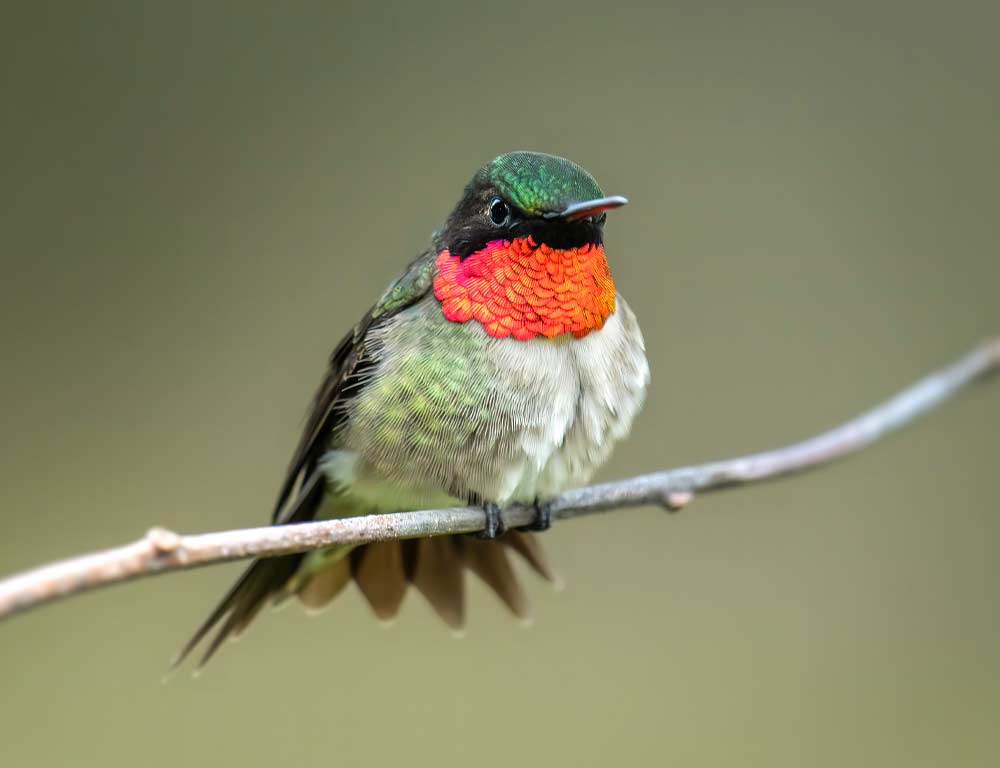
- Scientific name: Archilochus colubris
- Life span: 3-5 years
- Size: 3 to 3.5 inches
- Weight: Approximately 0.1 to 0.2 ounces
- Food: Nectar, supplemented by insects and spiders
- Wingspan: 3 to 4 inches
- Status: Common
The Ruby-throated Hummingbird, a dazzling jewel in Wisconsin’s avian crown, boasts vibrant emerald plumage and a signature iridescent ruby throat patch.
Despite their minuscule size, these agile birds undertake impressive migrations, covering thousands of miles annually. Preferring deciduous forests, gardens, and meadows, they rely on nectar-rich flowers and feeders for sustenance.
Known for their territorial nature, male Ruby-throated Hummingbirds fiercely guard feeding territories, engaging in aerial displays to deter intruders.
Their acrobatic flights and swift maneuvers delight birdwatchers, capturing the essence of nature’s delicate wonders.
2. Rufous Hummingbird
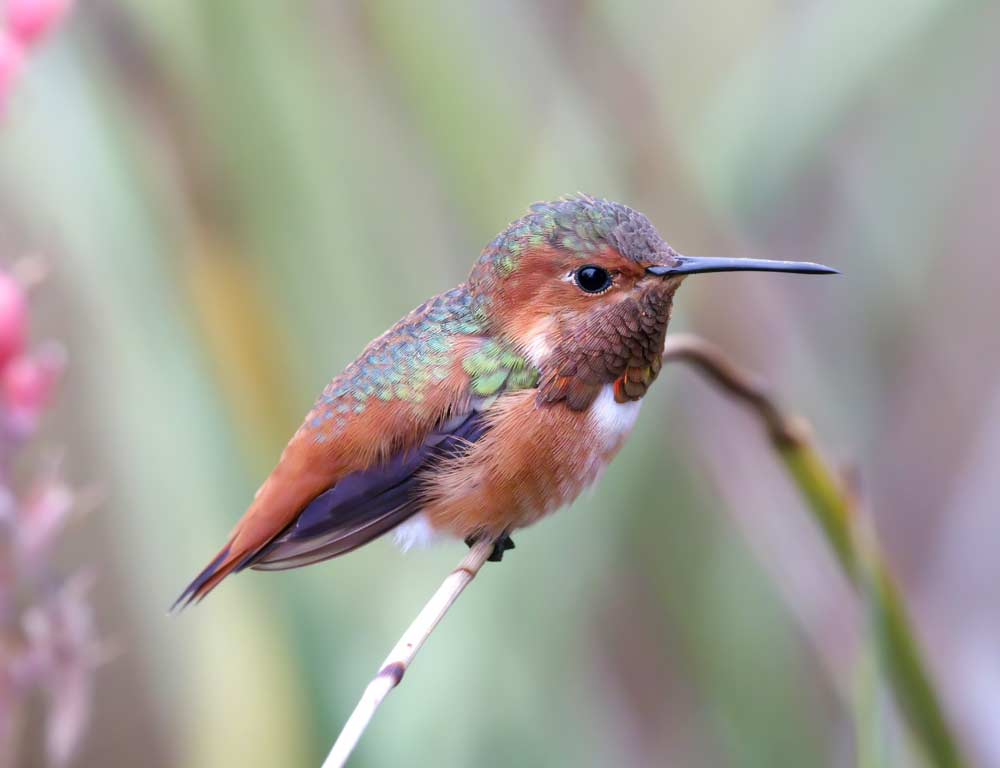
- Scientific name: Selasphorus rufus
- Life span: 3-5 years
- Size: 3.1 to 3.5 inches
- Weight: Approximately 0.1 to 0.2 ounces
- Food: Primarily nectar, supplemented with insects and spiders
- Wingspan: 4 to 4.3 inches
- Status: Common migrant
The Rufous Hummingbird, with its fiery orange plumage and iridescent green back, is a charismatic visitor to Wisconsin during migration.
These feisty birds travel remarkable distances, often from their breeding grounds in the Pacific Northwest to Central America.
Known for their territorial aggression, Rufous Hummingbirds fiercely defend feeding territories, engaging in aerial chases and displays.
They prefer montane habitats, including mountain meadows and gardens, where they feed on nectar-rich flowers and are attracted to hummingbird feeders.
The Rufous Hummingbird’s migratory journey and vibrant presence add an element of awe to Wisconsin’s birdwatching experience.
3. Allen’s Hummingbird
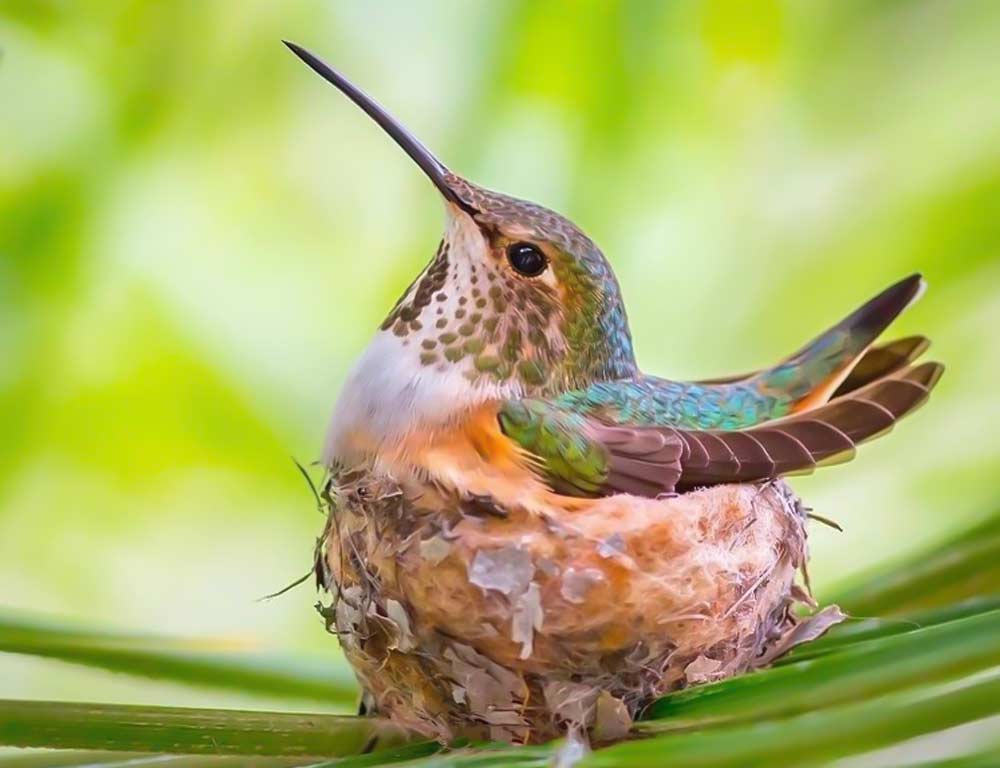
- Scientific name: Selasphorus sasin
- Life span: 3-5 years
- Size: 3 to 3.5 inches
- Weight: Approximately 0.1 to 0.2 ounces
- Food: Nectar, supplemented with insects and spiders
- Wingspan: 4 inches
- Status: Uncommon visitor
The Allen’s Hummingbird, a West Coast native, occasionally graces Wisconsin during migration. Distinguished by its striking orange-red throat and greenish back, this hummingbird resembles the Rufous Hummingbird.
Allen prefers coastal habitats, gardens, and chaparral, so Allen’s Hummingbirds are drawn to nectar-rich flowers and feeders.
Their migratory patterns bring them to unexpected locations, capturing the attention of observant birdwatchers lucky enough to witness their brief visits.
Despite their infrequent appearances in Wisconsin, the Allen’s Hummingbird adds a touch of Pacific allure to the state’s hummingbird diversity, showcasing the dynamic and ever-surprising world of avian migration.
4. Anna’s Hummingbird
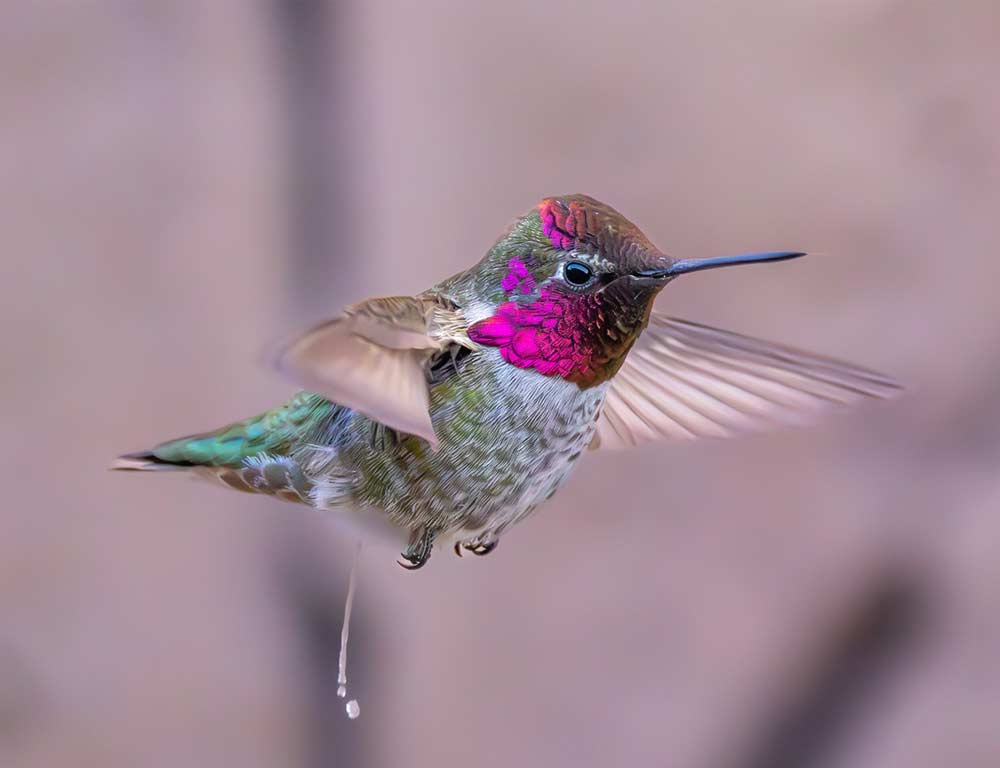
- Scientific name: Calypte anna
- Life span: 4-5 years
- Size: 3.9 to 4.3 inches
- Weight: Approximately 0.1 to 0.2 ounces
- Food: Nectar, supplemented with insects and spiders
- Wingspan: 4.7 inches
- Status: Resident, non-migratory
Anna’s Hummingbird, a year-round resident in parts of the Western United States, including occasional sightings in Wisconsin, is notable for its iridescent pinkish-red crown and throat.
Thriving in urban areas, gardens, and coastal scrublands, they are adapted to diverse habitats.
Known for their unique courtship displays involving elaborate aerial dives, Anna’s Hummingbirds bring a touch of elegance to the Wisconsin birdwatching experience.
Their reliance on flowering plants and feeders makes them a charming and accessible subject for observation.
5. Broad-billed Hummingbird
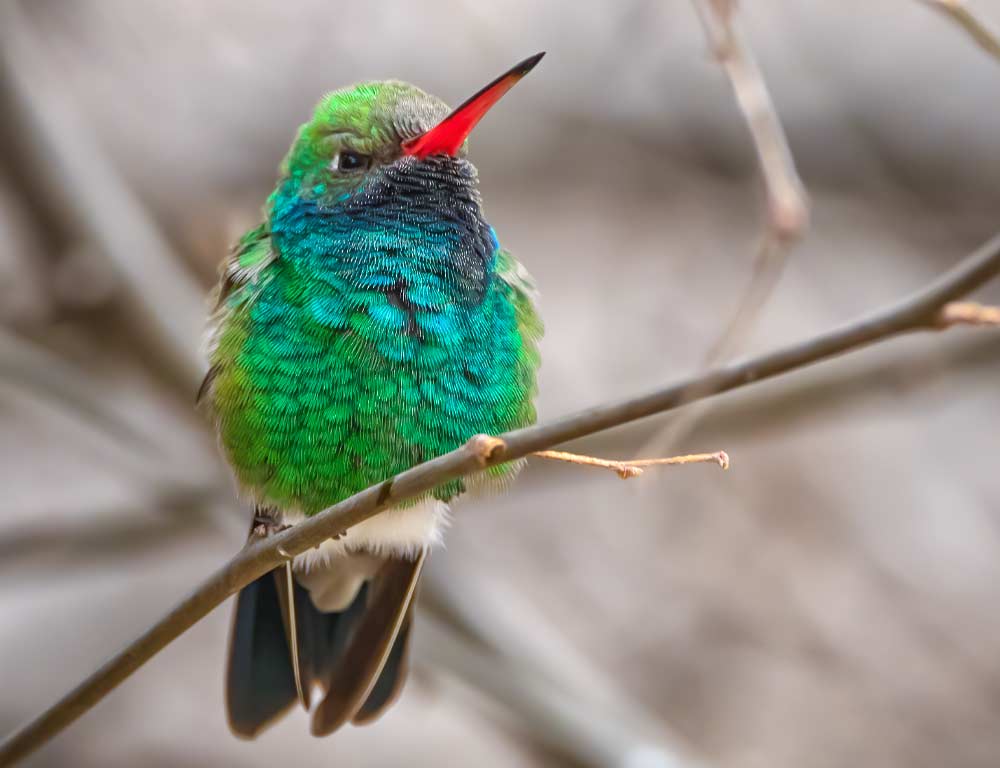
- Scientific name: Cynanthus latirostris
- Life span: 3-5 years
- Size: 3.1 to 3.5 inches
- Weight: Approximately 0.1 to 0.2 ounces
- Food: Nectar, supplemented with insects and spiders
- Wingspan: 4 to 4.5 inches
- Status: Migrant, occasional visitor
The Broad-billed Hummingbird, recognized by its striking blue and green plumage and vibrant red bill, is an occasional visitor to Wisconsin during migration.
Preferring arid habitats, including deserts and mountainous regions, these hummingbirds are drawn to brightly colored tubular flowers.
Their brief presence adds a splash of color and diversity to Wisconsin’s hummingbird population, providing a delightful surprise for avid birdwatchers.
6. Mexican-violetear Hummingbird
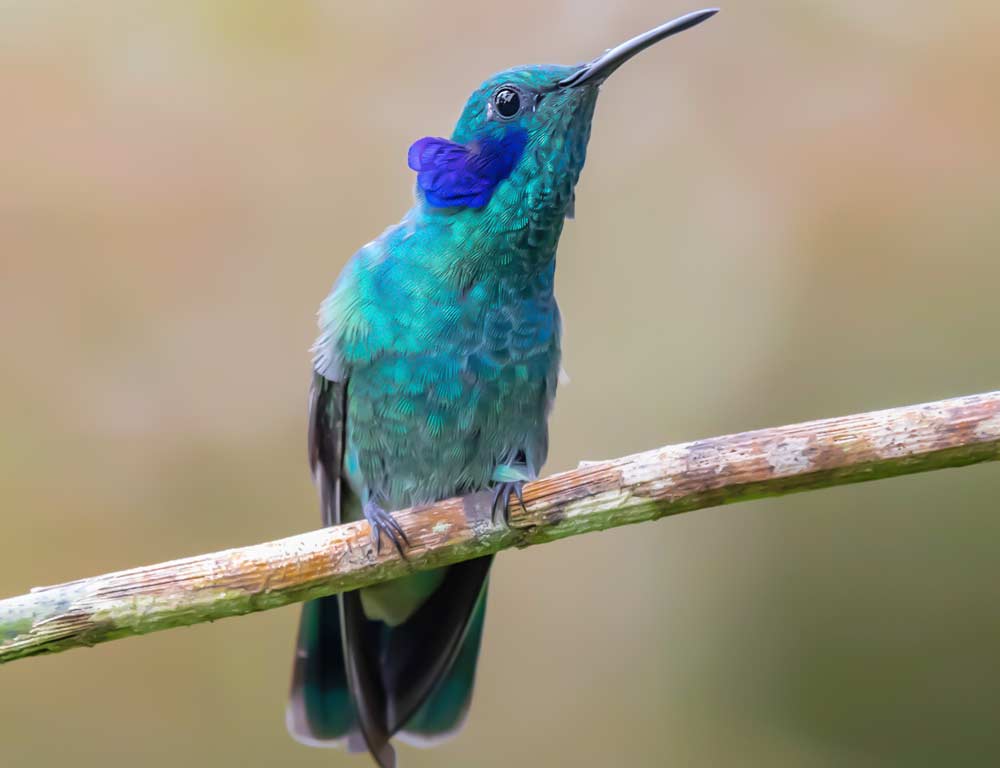
- Scientific name: Colibri thalassinus
- Life span: 3-5 years
- Size: 4 to 4.3 inches
- Weight: Approximately 0.1 to 0.2 ounces
- Food: Nectar, supplemented with insects and spiders
- Wingspan: 5 to 5.5 inches
- Status: Rare visitor
The Mexican-violetear Hummingbird, adorned with iridescent green and violet plumage, is a rare visitor to Wisconsin. Native to Mexico and Central America, their occasional appearances in the state attract attention from dedicated birdwatchers.
Their preference for cloud forests and montane habitats, where they feed on various flowering plants, adds an exotic touch to Wisconsin’s hummingbird diversity.
The sporadic sightings of the Mexican-violetear Hummingbird highlight the unpredictable nature of avian migration and contribute to the fascination of birdwatching in the state.
How to Increase the Number of Hummingbirds in Wisconsin?
Increasing the number of hummingbirds in Wisconsin requires a thoughtful approach that focuses on creating a hospitable environment for these tiny, vibrant creatures.
Here are several strategies to attract and support a thriving hummingbird population:
Plant Hummingbird-Friendly Flowers
Cultivate a variety of native, nectar-rich flowers that hummingbirds find attractive. Examples include bee balm, trumpet vine, columbine, and salvia. Choose a range of bloom times to provide a continuous food source.
Use Hummingbird Feeders
Hang hummingbird feeders filled with a solution of four parts water to one part white granulated sugar. Keep the feeders clean and change the solution every few days, especially during hot weather.
Provide Water Sources
Hummingbirds love to bathe and may benefit from shallow water sources. Consider adding a birdbath or misting system to your garden to provide them with opportunities for hydration and cleanliness.
Create a Safe Habitat
Minimize the use of pesticides and herbicides, as these chemicals can harm hummingbirds and their food sources. Opt for natural, bird-friendly alternatives to maintain a safe and healthy environment.
Plant Native Trees and Shrubs
Native vegetation provides nesting sites and enhances the overall biodiversity of your garden. Trees and shrubs, such as red cedar and willows, offer suitable locations for hummingbirds to build their nests.
Maintain a Year-Round Garden
Design your garden to provide resources throughout the year. Include plants that bloom in different seasons, ensuring a continuous supply of nectar, insects, and spiders – essential components of a hummingbird’s diet.
Create Hummingbird-Friendly Landscapes
Design your outdoor space with hummingbirds in mind. Incorporate features like perches and natural shelter to make your garden more inviting and secure for these aerial acrobats.
Educate and Encourage Others
Raise awareness about the importance of hummingbirds and individuals’ role in their conservation. Encourage neighbors and community members to adopt bird-friendly practices and create a network of hummingbird-friendly habitats.
Participate in Citizen Science Programs
Contribute to hummingbird research by participating in citizen science programs. Reporting hummingbird sightings and behaviors can help scientists understand migration patterns and population trends.
Support Conservation Initiatives
Contribute to and support local and national conservation efforts to protect hummingbird habitats. Participate in initiatives that promote the preservation of natural landscapes and the biodiversity crucial for hummingbird survival.
By implementing these practices, individuals and communities in Wisconsin can create a welcoming environment that fosters the well-being and proliferation of hummingbirds, enhancing the overall biodiversity of the region.
Wrapping Up
Wisconsin residents can turn their gardens into vibrant sanctuaries by cultivating a hummingbird-friendly environment, attracting these dazzling creatures.
By embracing sustainable practices, planting native flora, and maintaining a year-round haven, individuals contribute to the conservation of hummingbirds.
The joy of observing their aerial displays and vibrant plumage becomes a shared experience, deepening our connection to nature and fostering a commitment to preserving these delicate wonders.
Together, we can enhance Wisconsin’s hummingbird population and contribute to our communities’ broader tapestry of biodiversity.